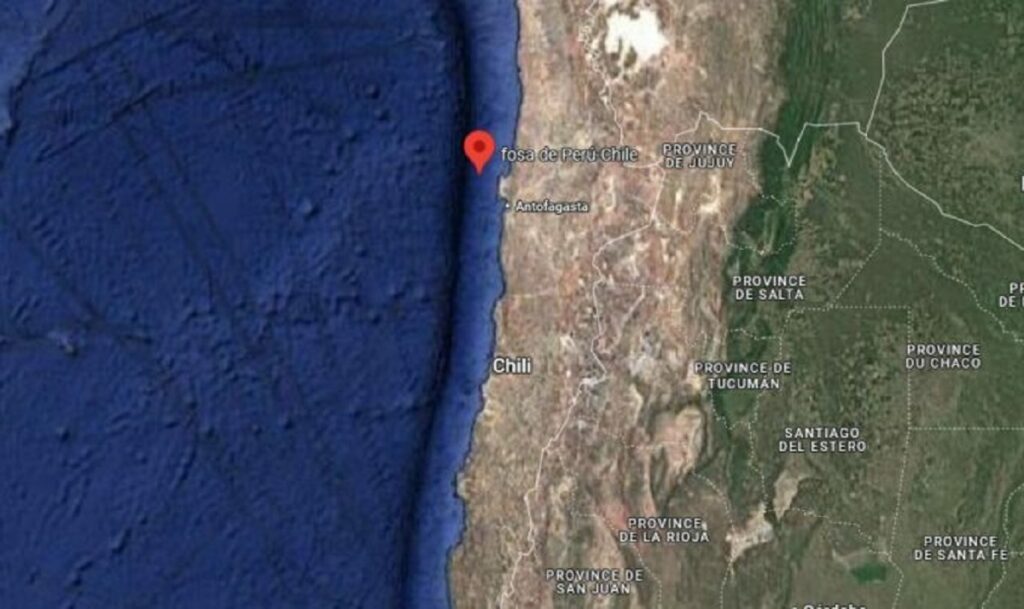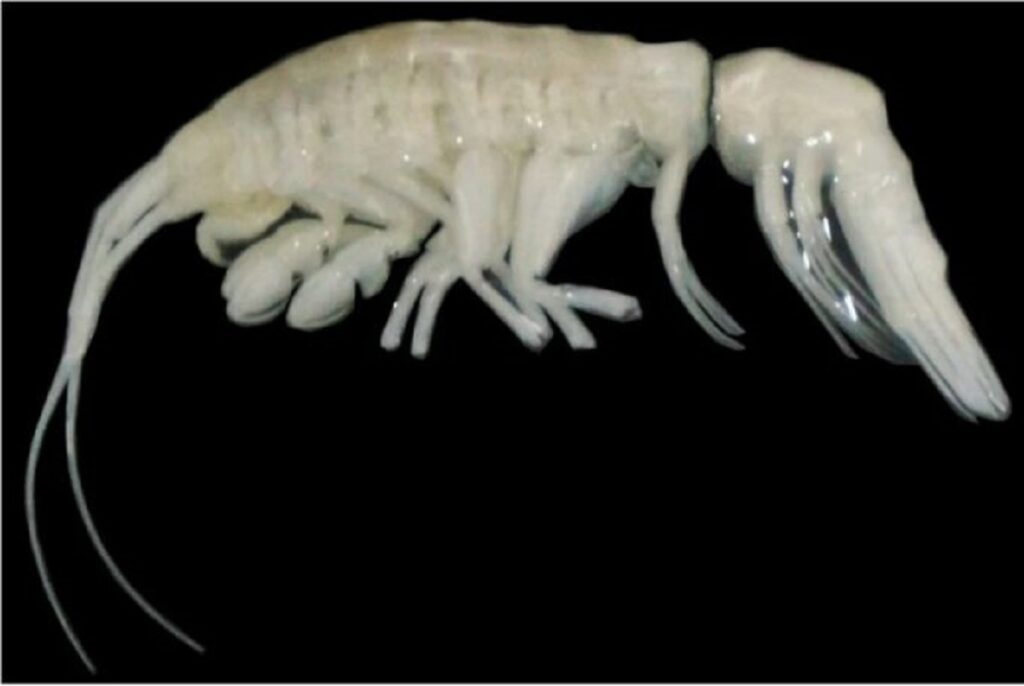In a remarkable discovery from the depths of the ocean, scientists have identified a new and formidable predator that calls the hadal zone home. This region, located between 6 and 11 kilometers below the surface, is one of the most extreme and least explored areas on Earth. Deep within this dark, high-pressure environment, researchers have found a surprising predator—one that, despite its small size, is a skilled hunter in its shadowy world.
A New Predator in the Deep

Meet Dulcibella camanchaca, a predatory amphipod, which was captured nearly 8 kilometers beneath the surface in the Atacama Trench, off the coasts of Chile and Peru. For those wondering, this “predator” is actually a type of shrimp—though not one you’d want to encounter on your next beach trip!
This creature, which measures no more than 4 centimeters long, is part of the amphipod family (related to sea fleas), but it’s far from harmless. Equipped with specialized appendages for grasping, Dulcibella camanchaca actively hunts other amphipods in the pitch-black depths of the ocean. It’s a reminder that even the tiniest creatures in the deep sea can be incredibly powerful and perfectly adapted to their extreme surroundings.
“The species is a fast swimmer, and we named it after the word for ‘darkness’ in the Andean languages, in reference to the gloomy environment in which it hunts,” explains Johanna Weston from the Woods Hole Oceanographic Institution (WHOI), co-director of the study.
A Groundbreaking Discovery
The IDOOS 2023 Expedition (Integrated Deep-Ocean Observing System) led to the capture of four specimens of Dulcibella camanchaca, which allowed scientists from the Instituto Milenio de Oceanografía (IMO) in Chile to conduct a range of detailed morphological and genetic analyses. The results, published in the journal Systematics and Biodiversity, confirm that this creature is not only a new species but also belongs to a new genus, which had never been documented before.
To put this discovery into perspective: a species refers to a group of organisms that share common physical traits, descend from a common ancestor, and can reproduce with one another to create fertile offspring. A genus, on the other hand, is a broader category that groups species with general similarities. For example, lions, tigers, and leopards all belong to the genus Panthera. Discovering a new genus is a significant breakthrough in biology—it means that an entirely new branch of the tree of life has been uncovered.
Why This Discovery Matters

This discovery has sparked excitement within the scientific community, as it sheds light on the richness of life in the deep ocean. “This discovery underscores the importance of continuing our research in the Atacama Trench, particularly within Chilean territorial waters,” says Carolina González, co-director of the study at IMO. Hadal zones are far from being barren wastelands; instead, they are home to unique biodiversity that we are just beginning to understand.
The vast and largely unexplored deep ocean is proving to be full of surprises, and this finding is a compelling reason for continued exploration. As scientists begin to uncover more about these regions, it becomes increasingly clear that the ocean’s depths are teeming with life that we have only scratched the surface of. Protecting these ecosystems from the pressures of human activity is crucial as we learn more about their delicate and diverse inhabitants.
So, the next time you think of the ocean, remember that there’s a vast, hidden world out there—home to creatures like Dulcibella camanchaca—waiting to reveal more of its mysteries.






